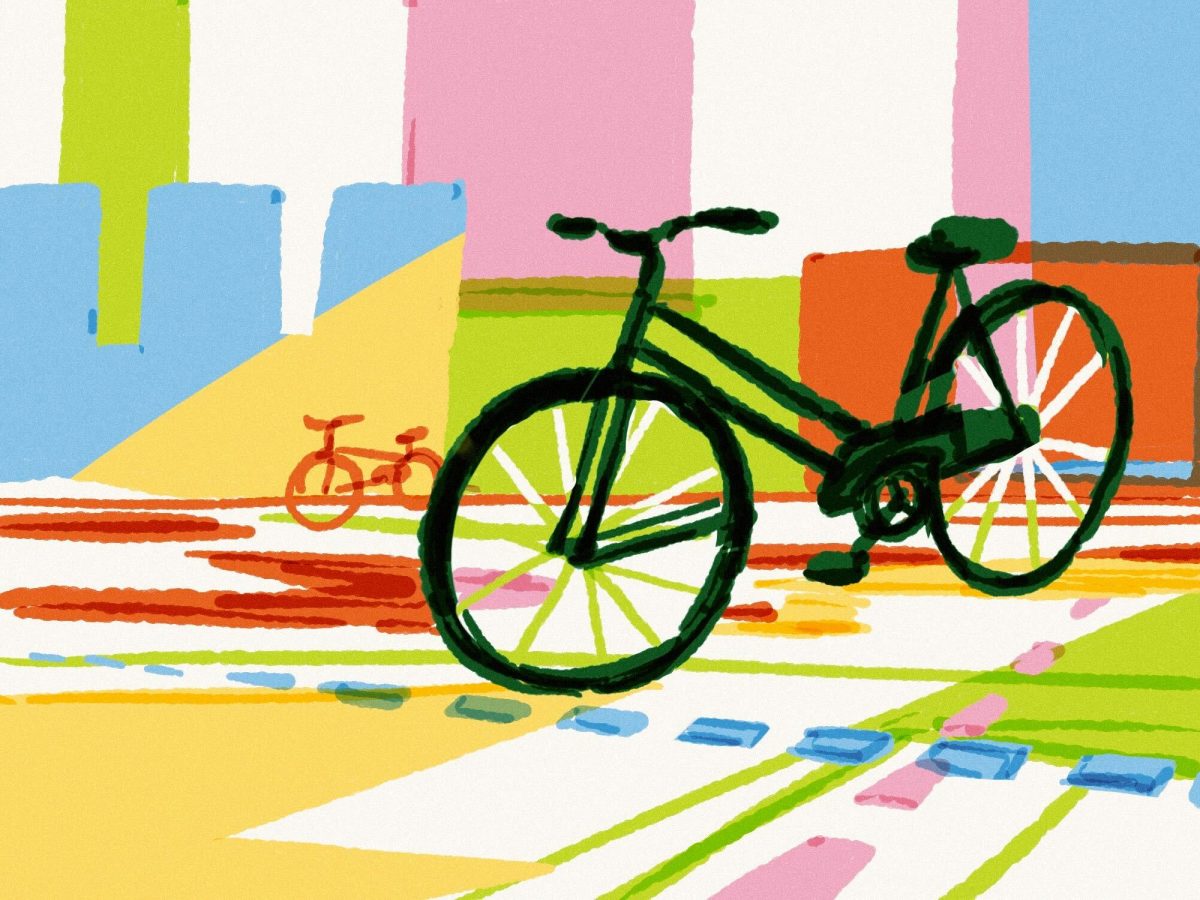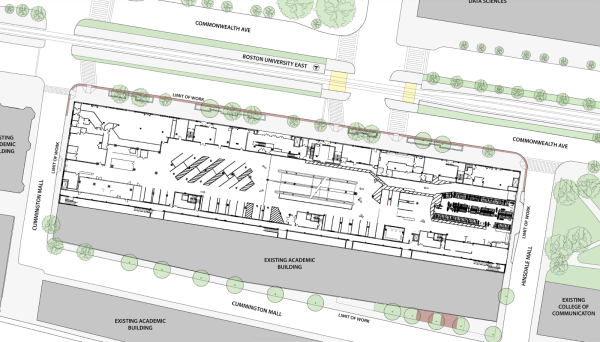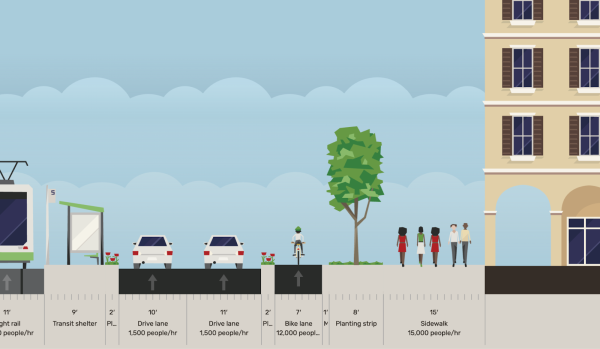
Emma Hart
Op-Eds do not reflect the editorial opinion of The Daily Free Press. They are solely the opinion of the author.
Jerry Zhou (CAS ’26) is a fourth-year Boston University College of Arts and Sciences studying Architectural Studies and Sociology. He has been interviewed for two prior pieces regarding cycling infrastructure by The Daily Free Press.
There is no bike lane in front of Boston University’s Warren Towers – one that functions, at least.
Recently, the Urbanism Club at BU spent an hour observing the Warren Towers “bike lane” from the fourth floor of the Center for Computing and Data Science.
Over the course of the hour, there were at least two cars or delivery vehicles parked in the lane at any given time. That left people on bikes, scooters, skateboards or any other mobility device weaving between cars, trucks and buses just to get through this treacherous stretch of Commonwealth Avenue.

There might be a painted bike symbol and lines on the pavement, but this is no space for bikes or scooters. This “bike lane,” functionally, is a “I can park here if my hazards are on” lane.
The City of Boston knows this. For years, the City has claimed to identify Comm. Ave. as a priority location for safe, protected infrastructure. In February 2023, the City began handing out flyers to students and other users on Comm. Ave. to notify us that we’d be getting protected bike lanes in the future. These lanes have yet to materialize.
While these better bike lanes are tied up in the hands of city bureaucracy and the upcoming mayoral election, students’ lives are being put at risk. Every time a student has to weave between trucks and buses to avoid an UberEats driver or semi-truck parked in the bike lane, inaction on this project puts student safety on the line.
It’s time for something better. And now is a better time than ever.
At the same time the City is pursuing — and stalling — protected bike lanes on Comm. Ave., BU is renovating Warren Towers. Typically, developers of large projects, such as the Warren Towers renovation, are required to sign what’s known as a Transportation Access Plan Agreement.
These agreements often result in the developer agreeing to construct an improved public realm, including more green space and protected infrastructure for bikers and scooters. For instance, the last agreement BU signed included protected bike lanes in front of the CDS building.The current agreement, negotiated between the City and the University, fails BU students.
Although the University states it will reconstruct the sidewalk in front of Warren Towers to improve “bicycle facilities,” the site plan proves otherwise. Bicycle facilities will stay the same as the current condition, according to the site plan attached to the agreement.

BU is leaving students who bike and scooter to fend for themselves against illegally parked cars and trucks. And if the University and the City don’t act now to change the agreed-upon public realm “improvements” for the Warren Towers renovation, they will be responsible for putting students’ lives in danger for decades to come.
This isn’t a herculean task. While BU reconstructs the sidewalk in front of Warren Towers, they should reconstruct it to add protected bike lanes — like we have in West Campus.
This not only prevents Uber drivers and delivery trucks from parking in the bike lane, but also reduces the amount of distance that pedestrians need to cross Comm. Ave. These protected bike lanes will make it safer to bike and scooter. They’ll make it easier for pedestrians to cross Comm. Ave. And they’ll even make it safer for drivers, who no longer have to deal with bikes and scooters weaving through illegally parked cars.
A protected bike lane is better for everybody.
We’ve done the measurements. There’s space. Between the street’s existing curbs, we measured just under 29 feet of width. That’s wide enough for a standard 10-foot-wide lane for cars and an 11-foot-wide lane for buses, leaving just about eight feet left over for a protected bike lane.

If the City and the University claim space is the limiting factor, that’s all the more reason for a sidewalk-level bike lane, which is the type of bike lane that the Massachusetts Department of Transportation recommends on space-constrained roads.
The only thing stopping Warren Towers from having a protected bike lane now is inaction on both the City and BU’s part.
Although both parties are currently choosing the path of least resistance, which is to not include a protected bike lane in front of Warren Towers, we must make it so that inaction is not their easiest way out.
BU students deserve safe streets. They deserve safety on Comm. Ave. They deserve it on Bay State Road, on Park Drive in South Campus and on the Riverway in Fenway Campus.
And they most certainly deserve it in front of Warren Towers.